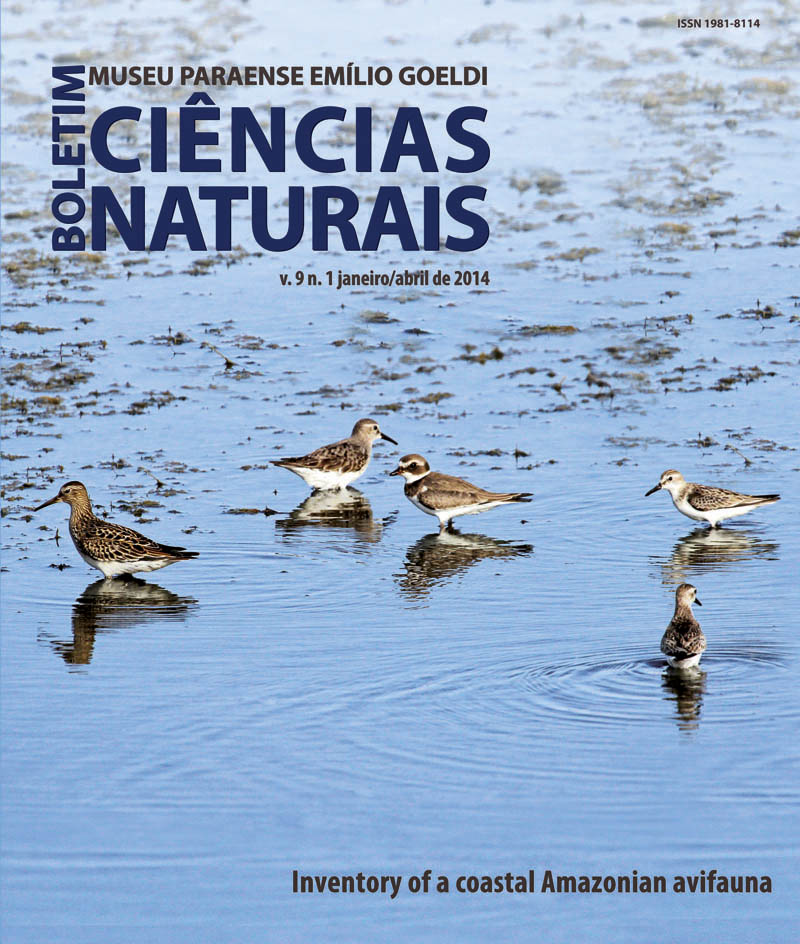Petrography, geochemistry and magnetic susceptibility of the Paleoproterozoic São João Granite, southeastern Amazonian Craton, Carajás Province
DOI:
https://doi.org/10.46357/bcnaturais.v9i1.537Keywords:
Paleoproterozoic, Amazonian Craton, São João Granite, Magnetic susceptibility, A-type graniteAbstract
The São João Granite (SJG) is an anorogenic circular batholith, with an outcropping surface of nearly 160 km², which intrudes Archean units of the Rio Maria Granite-Greenstone Terrain, southeastern Amazonian Craton. It consists of four distinct petrographic facies: biotite-amphibole monzogranite, biotite-amphibole syenogranite, amphibole-biotite monzogranite to syenogranite and biotite monzogranite to syenogranite. The SJG has a metaluminous to weakly peraluminous geochemical nature, with FeOt/(FeOt + MgO) ratios varying from 0.94 to 0.99 and K2O/Na2O from 1 to 2, showing geochemical affinities with intraplate granites, A-type granites of A2 subtype and ferrous granites, suggesting a crustal source for its origin. The SJG has higher contents of light rare earth elements (LREE) compared to heavy rare earth elements (HREE) and a sub-horizontal pattern for the latter. The negative Eu anomalies increase from the less evolved towards the more evolved rocks. Magnetic susceptibility data allowed the identification of six populations with different magnetic characteristics, where the highest values are relate to the less evolved facies and the lowest to the more evolved facies. The comparison between the SJG and the granitic suites of the Carajás Province shows that it displays strong geological, petrographic, geochemical and magnetic susceptibility similarities with the granites of the Serra dos Carajás Suite, in which it may be included.
Downloads
Published
Issue
Section
License
Publication means fully assigning and transferring all copyrights of the manuscript to the journal. The Liability Statement and
Assignment of Copyrights will be enclosed with the notice of acceptance. All the authors must sign the document and return it to the journal.






